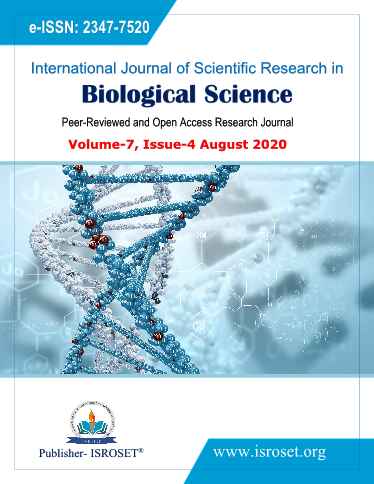Resting Behaviour of Zika and Dengue Vector Aedes Aegypti Mosquito in Gia Lai, Viet Nam
Keywords:
Mosquitoes, Aedes aegypti, animal behaviourAbstract
The study was conducted in Pleiku city and Dak Po district belonging to Gia Lai province during the period 2016-2018. The results showed that Aedes aegypti was found in all study sites. The distincly anthropophilic and endophilic behaviours of Aedes aegypti make it a very effective vector of Dengue, Chikungunya, and Zika viruses. In total, 95.3% of 746 resting adult Ae. aegypti were collected indoors, and only 4.7% outdoors. Indoor primary resting locations (73.8%) included living rooms (13.9%), bathrooms (4.8%), and others (7.5%). In Pleiku city, most of Ae. aegypti adults were collected on nets/ curtains (164 mosquitoes, 53.2%), followed by clothes (30.2%) and the lowest on wall surfaces (0.3%). Similarly, in Dak Po district, total of 422 specimens were collected and the highest collection was on clothes surfaces (234 mosquitoes, 53.4%), followed by nets/ curtains (176 mosquitoes, 40.2%) and the lowest on television surfaces (0.7%). In all sites, Ae. aegypti significantly rested from 1-2 m of height (72.3%).
References
WHO, “A global brief on vector-borne diseases, Geneva 27, Switzerland,” 2014.
S. Leta, T.J. Beyene, E.M. De Clercq, K. Amenu, M.U.G. Kraemer, C.W. Revie, “Global risk mapping for major diseases transmitted by Aedes aegypti and Aedes albopictus,” Int J Infect Dis, Vol.67, pp.25-35, 2018.
K.K. Ngo, X.Q. Nguyen, V.C. Nguyen, T.M.D. Nguyen, “Vector abundance and species composition of Anopheles mosquitoin Central Region and Central West Highlands, Viet Nam,” International Journal of Health and Clinical Research, Vol.1, No.,1, pp.22-29, 2018.
M.R. Leopoldo, “Pictorial keys for the identification of mosquitoes (Diptera: Culicidae) associated with Dengue Virus Transmission,” Zootaxa, Vol.589, No.,1, pp.1-60, 2004.
D.D. Chadee, “Resting behaviour of Aedes aegypti in Trinidad: with evidence for the re-introduction of indoor residual spraying (IRS) for dengue control,” Parasit Vectors, Vol.6, Isue.,1, pp.255, 2013.
F. Dzul-Manzanilla, J. Ibarra-Lopez, W. Bibiano Marin, A. Martini-Jaimes, J.T. Leyva, F. Correa-Morales, H. Huerta, P. Manrique-Saide, G.M. Vazquez-Prokopec, “Indoor Resting Behavior of Aedes aegypti (Diptera: Culicidae) in Acapulco, Mexico,” J Med Entomol, Vol.54, Isue.,2, pp.501-504, 2017.
W Preechaporn, M Jaroensutasinee, K Jaroensutasinee, “The larval ecology of Aedes aegypti and Ae. albopictus in three topographical areas of Southern Thailand,” Dengue bulletin, Vol.30, Isue.12, pp.204-213, 2006.
K.L. Nguyen, T.V. Nguyen, X.N. Xu, “Studied on distribuion, ecology bahaviour of Ae. aegypti và Ae. albopictus in Ha Noi,” Vietnam Journal of Preventive Medicine, Vol. 847, No.,6, pp.32-33, 2013.
V.N. Do, X.Q. Nguyen, “A study on distribution and activity habits of Aedes aegypti and Aedes albopictus in Binh Dinh province, Vietnam,” the 6th National conference on ecology and biological resources, pp.1534-1539, 2015.
Downloads
Published
How to Cite
Issue
Section
License

This work is licensed under a Creative Commons Attribution 4.0 International License.
Authors contributing to this journal agree to publish their articles under the Creative Commons Attribution 4.0 International License, allowing third parties to share their work (copy, distribute, transmit) and to adapt it, under the condition that the authors are given credit and that in the event of reuse or distribution, the terms of this license are made clear.







